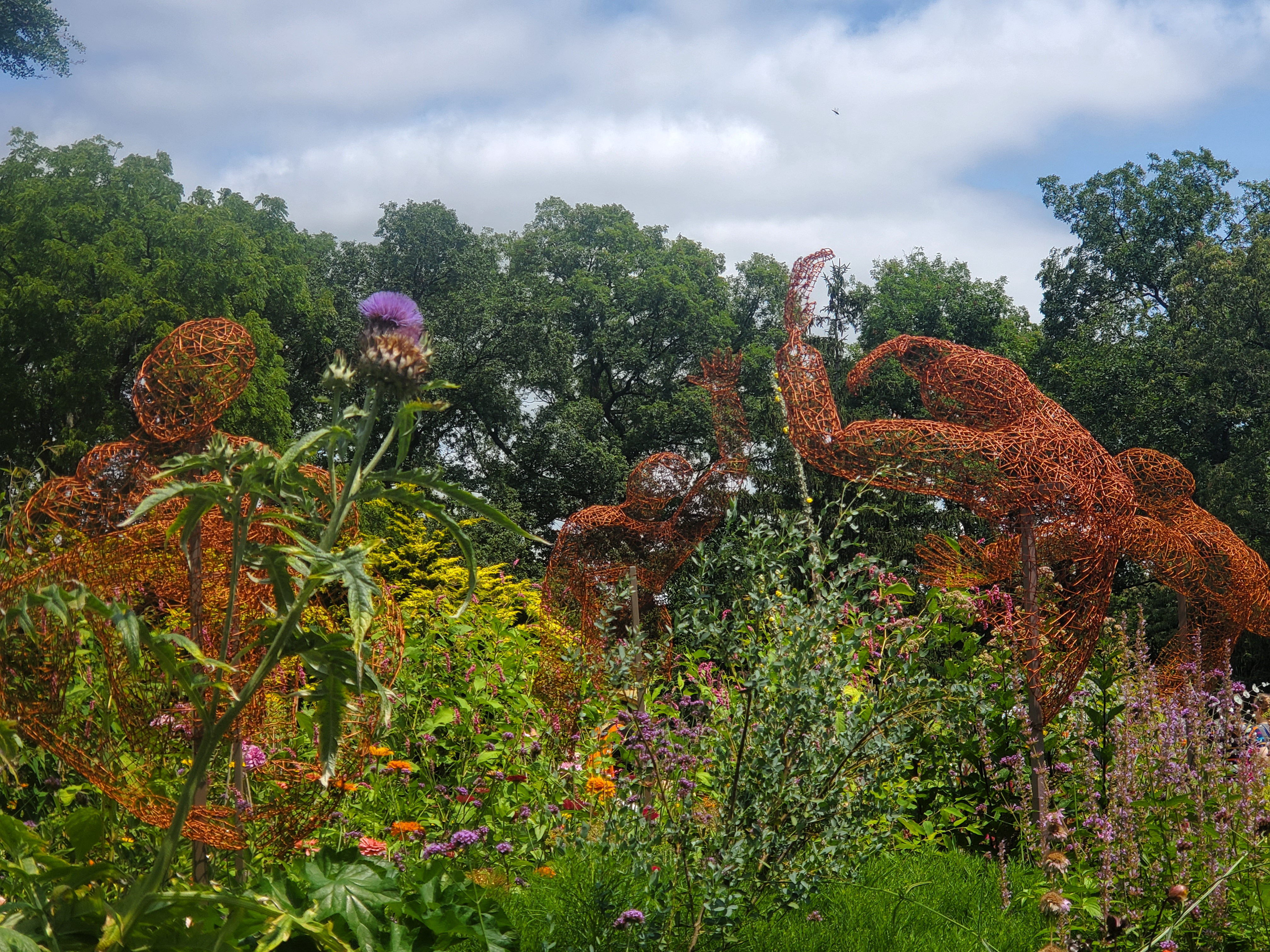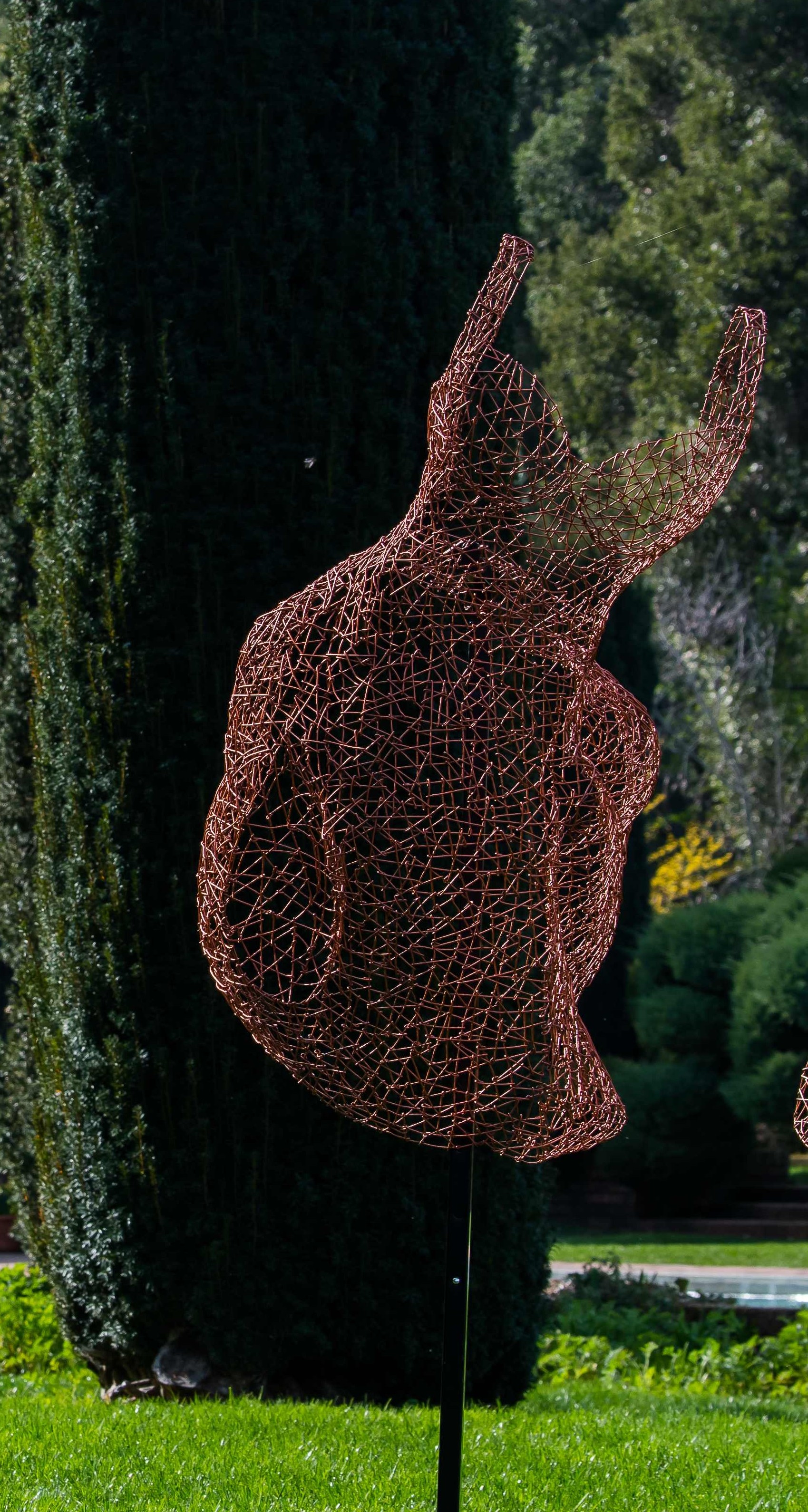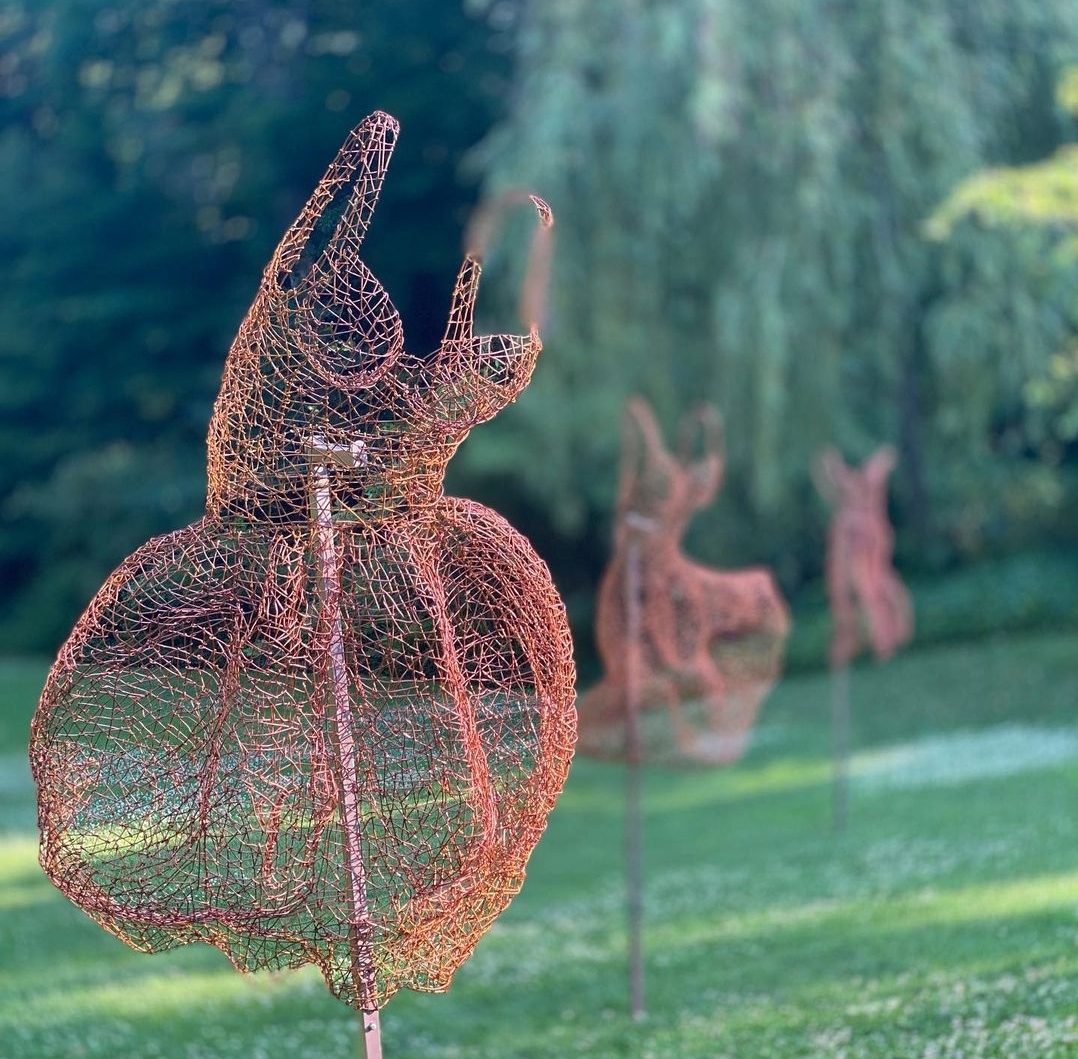Kristine Mays
San Francisco, CA | Artist| @kristinemays
Project Title: Rich Soil
Identies/Ideas in Artists Work: Black and indigenous spaces; Disabled/accessible; Women representation; LGBTQIA; Performance/audio /smell/touch; Politics/Activism; Public Process, Research, Learnings & Decision Making
Location: Currently located at Hillwood Museum Estate and Gardens in Washington DC. It was originally shown at Filoli Historic House and Garden in Woodside, CA. It will be traveling to the Atlanta Botanical Garden in February 2022.
Rich Soil - originally displayed at Filoli Historic House and Garden (in California), and now at Hillwood Estate Museum and Gardens in Washington DC, is a tribute to the ancestors, broadly defined to encompass those with roots in genealogy and those in geography. With it came the first land acknowledgments by the institutions hosting the exhibits. Hillwood also acknowledged the families that owned enslaved people on the property.
The pieces interact with the land, drawing inspiration from the movement of Alvin Ailey's dance composition, "Revelation.” Rich Soil pays honor to the ancestors—those that walked, lived on and tended to the land— the lives that have been recognized and those that have been "forgotten" or deemed invisible. Rich Soil is about the spirits of ancestors coming up from the soil, finally able to rejoice in the ultimate freedom.
Both locations are similar in that they are affluent communities housing a mansion on multiple acres of land. While open to the public, these spaces have lacked diversity. This exhibition has been the catalyst to inclusion and diversity. People are mesmerized by the beauty of the work, while at the same time, challenged to think about how their history plays a role in our collective history.



How do you reclaim the collective sensory experiences that will tell the story of your community?
This work is an act of making the invisible visible. It is an intentional act of expressing gratitude and appreciation to those oppressed by colonialism. Because the term ancestors is used in such a broad way, this act of acknowledgment asks all of the viewers to examine their history and the roles in which their families played in the creation of America.
At the same time, the beauty of such a natural setting is the backdrop to this social consciousness. The smell of roses, the sight of beautifully planted gardens rich in colors, foliage, and wonder draw the viewer. The narratives that accompany each installation initiate reflection. The fact that the work has an ephemeral, ethereal quality to it, adds a spiritual element to it, which seems appropriate considering that Christianity is such a complex part of the American story.
The programming set forth by Hillwood added to the experience. Visitors were invited to create their own wire masterpieces inspired by the show. Two dance companies performed among the sculptures with work inspired by the themes of the show. Intentional efforts were made to market to a larger, more diverse audience as a variety of publications (including those of African American, LGBTQIA) ran ads and featured articles. The students of Howard University (an HBCU) were also made aware of the exhibit. While this historically black college is less than 10 miles from Hillwood Estate Museum and Garden, few students have attended the property until now.
Who is your audience? How do you imagine your work will inspire change?
The audience is the general public. It is intended for whomever wants to see it. My hope is that the work will challenge and inspire people to reflect and examine both the past and the present. Hopefully it will create community, spark conversation and shift the emphasis from opulence to humanity.
Is there a call to action you want the reader to do or take?
Soak it in with all of the senses. What do you see? How does it make you feel? What thoughts does it evoke and how can you explore it further?

Kristine Mays has been breathing life into wire since 1993, creating life-size wire sculptures that reveal the human form. Sculpted from thousands of pieces of wire hooked and looped together by hand, each of Kristine Mays’ sculptures delivers a message of strength and perseverance. The work speaks to identity and the impact our lives have on the world. Her work speaks to issues of social justice as she uses her art as a means of activism. Her work has received local and national press. She is represented by Richard Beavers Gallery in Brooklyn, NY and Zenith Gallery in Washington D.C. Collectors of her work include an eclectic mix of people including George Lucas and Mellody Hobson with her work displayed in many SF Bay Area Homes and private collections throughout the United States.